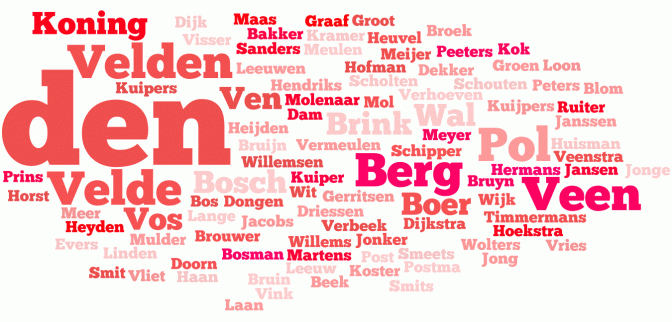Understanding how Dutch people named their children or themselves will help you solve your family mysteries. Here are eight Dutch naming patterns to watch out for.
- Naming children after grandparents
Many Dutch children were named after their grandparents, often in a specific order: the first son after the paternal grandfather, second son after the maternal grandfather, first daughter after maternal grandmother, second daughter after paternal grandmother. After the grandparents were named, the next children may have been named after the parents’ siblings. - Giving children the same name as deceased siblings
If a child died, the next child of the same sex would typically be given the same name as the deceased sibling. - Naming children after deceased spouses
If a widow or widower remarried, the first child of the right sex was often named after the deceased spouse. - Only naming children after relatives who are deceased
This is a pattern that does not occur everywhere, but I have noticed it in parts of Gelderland and Noord-Brabant in the 1600s and 1700s, for example. With this pattern, children are only named after a relative after the relative’s death. This means you can’t just assume that the oldest son was named after the grandfather, if the grandfather was still alive. Sometimes, you can even use the names of the children to determine when a grandparent must have died. - “Van” names
Some people named themselves after their place of origin; “van” meaning “from.” An example is “Van Heusden,” meaning “from Heusden.” If you see someone with a Van-name, it could either be that the person was actually from that place originally, or that an ancestor took that name because they came from that place but it had been passed along as a hereditary surname. Some people think that “Van” names are nobly, but that is rarely the case. Many noble families named themselves after the places they were the lord of, but most people with Van-names were ordinary citizens who just named themselves after a place of origin. - Farm names
In parts of Gelderland and Overijssel, people named themselves after the farms they lived on in the period before 1811. - Patronymics
A patronymic is a name derived from the father’s name, like Pietersen = son of Pieter. In several places, people used patronymics instead of last names or in addition to last names, especially before 1811. In 1811, hereditary last names became required throughout the Netherlands, but some areas in the north still used patronymics in addition to last names. - “Husbandnymics”
This is not an official term, but you sometimes see wives mentioned with a name that looks like a patronymic, but which is derived from her husband’s name rather than her father’s name. For example, a Trijntje Jorissen might be Joris’ wife rather than Joris’ daughter. I especially noticed this pattern when researching New Netherland families.

Name cloud of the 100 most popular names


Thank you for the helpful information, Yvette. I appreciate your posts.
Again: thank you for the helpful information. Perhaps you could give ideas where to search for records (notarial and others) regarding persons living in small towns next to a larger town. I have in mind Leiderdorp next to Leyden before 1650.
I have a question about 4: ‘Only naming children after relatives who are deceased’.
Among my ancestors is a couple with the fathers’ father being Johannes and mothers’ father being (if I have the right father) Antoni.
The first two sons were called Johannes, the last three were called Willem. No other kids were found. Antoni was still alive.
The baptism witness of the mother her birth, so the grand uncle of the children, was named Willem. Might the sons called Willem might be named to the (deceased) granduncle, who was also the mothers’ baptism witness, in the area of Wijchen?